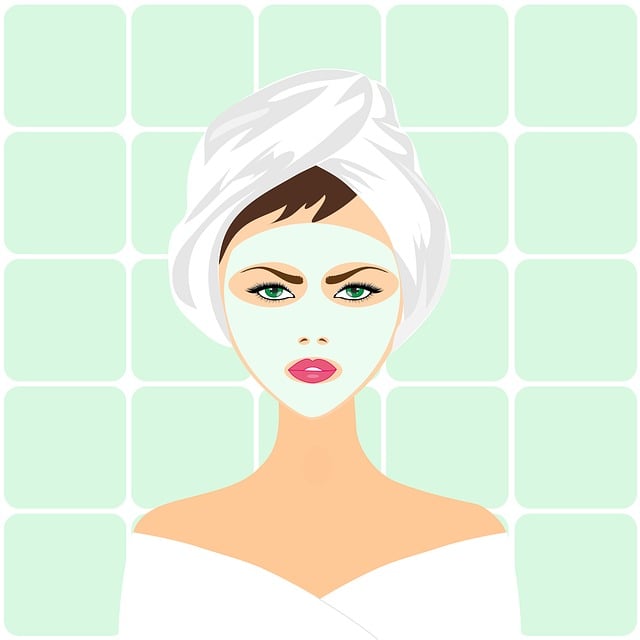DIY vs. Professional: Unlocking Optimal Facial Skin Treatments

Choosing between DIY and professional facial skin treatments depends on individual needs. While at-h…….
In the quest for achieving flawless and healthy skin, facial skin treatments have emerged as a pivotal aspect of skincare routines worldwide. This comprehensive article delves into the intricate world of facial skin care, exploring various treatments, their mechanisms, global impact, economic significance, technological innovations, regulatory frameworks, and future potential. By examining these facets, we aim to provide an insightful guide that empowers individuals to make informed decisions regarding their skin health and beauty regimen.
Definition: Facial skin treatments encompass a wide array of procedures and practices designed to enhance the appearance, texture, and overall health of the skin on the face. These treatments go beyond basic cleansing and moisturizing, delving into deeper layers to address specific concerns such as acne scars, fine lines, wrinkles, hyperpigmentation, and uneven skin tone.
Core Components: The foundation of facial skin treatments lies in several key elements:
Assessment: Skilled dermatologists or estheticians conduct thorough skin assessments to identify individual needs, skin types, and underlying conditions. This step is crucial for tailoring effective treatment plans.
Cleaning and Exfoliation: Preparing the skin involves gentle cleansing to remove impurities and exfoliating dead skin cells to unveil healthier, smoother layers beneath.
Targeted Treatments: Depending on the concern, various treatments are employed, including chemical peels, microdermabrasion, laser therapy, filler injections, or topical applications of retinoids and hydroquinone.
Moisturization and Protection: Post-treatment, proper moisturizing routines and sun protection become paramount to seal in hydration and prevent further damage.
Historical Context: The practice of facial skin treatments has evolved over centuries, with ancient civilizations like the Egyptians and Greeks employing natural remedies for skin rejuvenation. Modern skincare took a significant leap forward in the 20th century with the advent of science-backed active ingredients and innovative procedures. Today, advancements in dermatology, esthetics, and cosmetic surgery have led to a diverse range of facial skin treatments, catering to a wide array of needs and preferences.
Facial skin treatments have transcended geographical boundaries, becoming a global phenomenon with distinct regional variations. Key trends shaping the industry include:
Personalization: The demand for personalized skincare regimens is on the rise, driven by an increased awareness of individual skin’s unique needs and responses. This trend has led to the development of highly customized treatments and products.
Natural and Organic Skincare: There is a growing preference for natural and organic ingredients in facial treatments, reflecting a broader consumer shift towards eco-friendly and environmentally conscious choices.
Tech-Driven Innovations: Technological advancements, such as LED light therapy, radiofrequency (RF) treatments, and ultrasound devices, have entered the skincare arena, offering non-invasive alternatives to traditional procedures.
Cultural Exchange: The global exchange of skincare practices has led to a fusion of traditional remedies and modern techniques, resulting in innovative treatments inspired by diverse cultures. For instance, Asian skincare routines incorporating double cleansing and sheet masks have gained worldwide popularity.
The facial skin treatments market is a significant contributor to the global beauty and wellness industry, experiencing substantial growth over the past decade. Key economic aspects include:
| Economic Indicators | Impact |
|---|---|
| Market Size: The global facial skincare market size was valued at USD 172.4 billion in 2021 and is projected to grow at a CAGR of 7.5% from 2022 to 2030 (Grand View Research). | Reflects the increasing demand for advanced skincare solutions, with consumers worldwide investing in their skin health. |
| Investment Patterns: The industry attracts significant investments from cosmetic companies, venture capitalists, and startups focused on innovative skincare technologies. | Fosters rapid innovation and the development of cutting-edge treatments, ensuring a competitive edge in the market. |
| Economic Impact: Facial skin treatments contribute to job creation in dermatology, esthetics, spa services, and product manufacturing industries. | Creates economic opportunities and stimulates local economies through skincare tourism and wellness retreats. |
| Affordability and Accessibility: Online retailers and direct-to-consumer brands have made premium skincare products more accessible and affordable, democratizing access to high-quality treatments. | Enables consumers worldwide to participate in skincare trends and invest in their well-being without geographical barriers. |
Technological breakthroughs have revolutionized facial skin treatments, offering safer, more effective, and non-invasive alternatives to traditional methods. Notable advancements include:
Laser Therapy: Lasers target specific skin concerns with precision, such as breaking down pigmented spots or stimulating collagen production for wrinkle reduction. Fraxel and Erbium YAG lasers are popular choices for their ability to treat various conditions without downtime.
LED Light Therapy: Low-level laser light therapy (LLLTL) uses different wavelengths of light to target specific skin concerns. Red light promotes collagen synthesis, while blue light is effective against acne-causing bacteria.
Radiofrequency (RF) Treatments: RF devices use heat energy to stimulate collagen production and tighten skin. Thermage and Polylux are examples of RF treatments for non-invasive face lifts and skin tightening.
Ultrasound Devices: High-intensity focused ultrasound (HIFU) technology offers non-surgical facelifts by breaking up collagen fibers, leading to improved skin elasticity and a more youthful appearance.
Regulatory bodies worldwide play a crucial role in ensuring the safety and efficacy of facial skin treatments. These organizations establish guidelines, monitor product formulations, and approve devices for medical use. Key regulatory players include:
Food and Drug Administration (FDA): In the United States, the FDA regulates cosmetic products and medical devices, including skincare devices and active ingredients used in treatments.
European Union (EU) – Cosmetic Products Regulation: The EU has stringent regulations governing cosmetic products, requiring safety assessments and ingredient listings for all products sold within the EU.
International Organization for Standardization (ISO): ISO standards provide guidelines for quality management systems, ensuring consistent product quality and treatment outcomes across different regions.
The future of facial skin treatments promises exciting possibilities with ongoing research and technological advancements. Key trends shaping the industry include:
Personalized Medicine: The integration of genomics and advanced analytics will enable more precise, tailored skincare solutions based on individual genetic profiles and skin responses.
3D Printing of Skincare: 3D printing technology could revolutionize customized skincare by creating products formulated specifically for an individual’s needs, offering targeted treatments with minimal waste.
AI and Virtual Reality (VR): Artificial intelligence can analyze skin conditions and provide personalized treatment recommendations. VR can enhance the patient experience during treatments, making procedures more comfortable and immersive.
Sustainable Skincare: There is a growing emphasis on eco-friendly practices, with brands focusing on sustainable packaging, natural ingredients, and circular economy principles to reduce environmental impact.
Facial skin treatments represent a multifaceted industry that has evolved significantly over time, driven by technological advancements, cultural exchange, and a growing emphasis on personal well-being. As consumers become increasingly discerning, the market continues to adapt with personalized, innovative, and sustainable solutions. By staying informed about the latest trends, individuals can make confident choices regarding their facial skincare routines, ensuring optimal skin health and enhancing their overall appearance.

Choosing between DIY and professional facial skin treatments depends on individual needs. While at-h…….

Collagen-boosting facials enhance skin health and youthfulness. Post-facial care includes moisturizi…….

Microdermabrasion facials are non-invasive skin treatments that exfoliate dead cells, reveal brighte…….

Chemical peels are skincare treatments using chemicals to exfoliate skin, revealing smoother, younge…….

Facial skin treatments like hydrating and anti-aging facials target specific needs: hydration for dr…….

Advanced skin therapy like cryotherapy facials offers a non-invasive approach to reduce inflammation…….

Hydrating facial treatments using Platelet-Rich Plasma (PRP), popular as Vampire Facials, combine na…….

Post-anti-aging skin treatments, proper hydration and nourishment are key for healing and elasticity…….

Collagen-boosting facials are popular for their ability to nourish and revitalize skin by stimulatin…….

Collagen-boosting facials target aging skin by stimulating fibroblasts to produce more collagen, lea…….